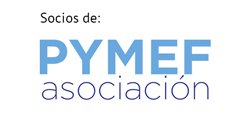Charles M. Balagizi a, ⁎ , Marcelino M. Kasereka a , Emilio Cuoco b , Marcello Liotta c
Abstract:The city of Goma and its surrounding villages (Democratic Republic of Congo, DRC) are among the most densely populated regions in the world heavily affected by volcanic hazards. In 2002, the Nyiragongo volcano erupted, destroying 10-15% of Goma and forcing a massive evacuation of the population. Therefore, the * 1.5 million inhabitants of Goma and Gisenyi (Rwanda) continue to live with the threat of new lava flows and other eruptive hazards from this volcano. The current network of fractures extends from the Nyiragongo summit to Goma and continues under Lake Kivu, giving rise to fears that an eruption could even produce an active vent within the centre of Goma or within the lake. A sublacustrine volcanic eruption with vents at the bottom of the main basin and/or Kabuno Bay of Lake Kivu could potentially release some 300 km3 of carbon dioxide (CO2) and 60 km3 of dissolved methane (CH4) into its deep waters which would be catastrophic for the populations (*2.5 million people) along the shores of the lake. For the moment, the ongoing hazards related to the Nyiragongo and Nyamulagira volcanoes are silently killing people and animals, slowly destroying the environment and seriously damaging the health of the population. They include mazuku (CO2-rich places where people often die of asphyxiation), highly fluorinated surface and groundwater and other locally neglected hazards. The volcanic gas plume causes poor air quality and acid rain, which is commonly used for drinking water. Given the large number of people at risk and the continuous movement of people to Goma and surrounding villages, there is an urgent need for a comprehensive assessment of natural hazards in the region. This article presents an overview of the natural hazards in the
region around Goma based on field investigations, CO2 measurements in mazuku and chemical data from Lake Kivu, rivers and rainwater. The field investigations and datasets are used together with extremely rich historical (1897-2000) and recently published information on the Nyiragongo and Nyamulagira volcanoes and Lake Kivu. We also present maps of mazuku and fractures in Goma, describe the history of volcanic eruptions with mitigation and hazard assessment implications, and consider social realities useful for an integrated risk management strategy.
Keywords: Nyiragongo and Nyamulagira volcanoes Lava flow hazards Mazuku hazards Dental fluorosis Ash and volcanic gas hazards Lake Kivu stability Limnic eruption
a Departamento de Geoquímica y Medio Ambiente, Observatorio Volcán Goma, 142, Av. du Rond-point, Goma, República Democrática del Congo
b Università della Campania “Luigi Vanvitelli”, Via Vivaldi 43, 81100 Caserta, Italia
c Istituto Nazionale di Geofisica e Vulcanologia, Sezione di Palermo, Via Ugo La Malfa, 153, 90146 Palermo, Italia





